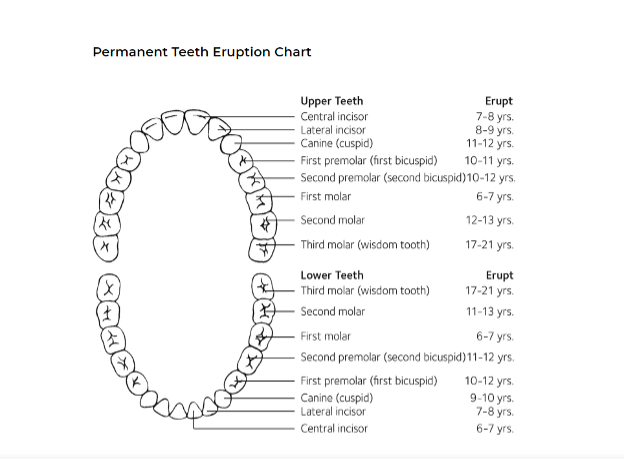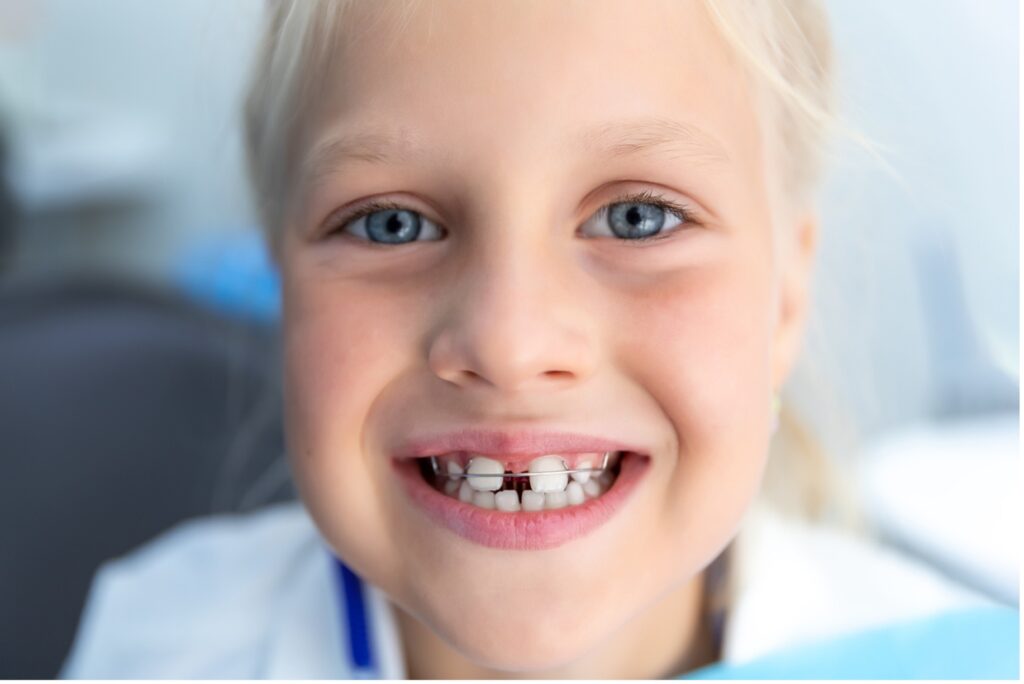Losing baby teeth is a rite of passage for children, often marked by the anticipation of a visit from the tooth fairy. Yet, what happens when a baby tooth is lost, but its permanent successor fails to emerge? It’s a scenario that can puzzle and concern parents, prompting questions about what might be causing the delay and what you can do about it. This guide explores why children may have a missing permanent tooth and how it can affect their dental health. Join us as we navigate the journey of childhood dental development and shed light on the treatments available to address missing permanent teeth, ensuring that every child’s smile grows with confidence and vitality.
How Can My Child Be Missing a Permanent Tooth?
Children typically lose their baby teeth between the ages of 7 and 12. In most cases, the eruption of the underlying permanent tooth follows within six months after losing a baby tooth.
The chart below illustrates the age ranges for each tooth to erupt.

If a child loses a baby tooth but the permanent tooth does not appear in a reasonable amount of time, it could be for several reasons. Here are the two most common reasons:
Crowded Teeth
When the teeth are too crowded, it can happen that there isn’t enough space for the permanent tooth to emerge properly after the loss of a baby tooth. Here are two common problems that can result from crowded teeth affecting the eruption of a permanent tooth:
- The permanent tooth may become impacted. In other words, it cannot erupt through the gums properly. Usually, this happens when there isn’t enough space for the tooth to grow, so it gets trapped under the gum or against other teeth. It’s like a roadblock, and the permanent tooth can’t get through!
- The tooth may emerge improperly, leading to teeth misalignment and bite problems.
It’s essential to address crowding early on to prevent complications and ensure the healthy eruption of permanent teeth.
The Permanent Tooth is Missing
The other reason for a missing permanent tooth is that the permanent tooth never developed. A tooth can fail to develop for various reasons:
- The tooth fails to develop, often due to genetic factors inherited from both parents.
- Injury to the mouth can damage the developing permanent tooth, leading to its absence.
- Some dental conditions or syndromes affect tooth development, resulting in missing permanent teeth.
If you notice a missing permanent tooth in your child’s mouth, it’s important to schedule your child to see an orthodontist for evaluation and appropriate treatment.
Will a Missing Permanent Tooth Affect Teeth Alignment?
One of the primary concerns associated with a permanent tooth is its impact on dental alignment and bite. Each tooth plays a crucial role in maintaining proper spacing and alignment. When a tooth is missing, neighboring teeth may shift positions over time, leading to crowding, spacing, or misalignment. These changes can affect the aesthetics of your child’s smile and increase the risk of other dental problems, such as tooth decay and gum disease.
Treatment Options for a Missing Permanent Tooth
We aim to provide personalized orthodontic treatment solutions tailored to your child’s needs. Depending on the circumstances, treatment options may include:
Treatment for Impacted Teeth: The treatment for an impacted tooth depends on its location and severity. Mild cases may benefit from orthodontic treatments, helping to bring the tooth to its correct position. Severe cases, especially involving wisdom teeth, often require surgical exposure or removal.
Orthodontic Treatment: Orthodontic treatment, such as braces or clear aligners, can help gradually shift the teeth into their proper positions, addressing spacing and alignment issues associated with missing teeth.
Dental Implants: For cases where a single tooth is missing, we may recommend a dental implant to replace the absent tooth permanently. If your child is not yet at an age suitable for dental implants, you may consider other options, such as dental bridges or removable partial dentures.
Early intervention is critical when addressing missing permanent teeth in children. By addressing the issue promptly, we can help minimize long-term complications and ensure optimal dental health and aesthetics as your child grows.
Complementary Kids Club Program at Orthodontic Specialists
There is no exact age for children to begin orthodontic treatment. However, the American Association of Orthodontists(AAO) recommends your child visit an orthodontist around age seven.
Orthodontic Specialists has a complementary Kids’ Club Program for monitoring your child as their mouth grows. Our free program and growth check ensures your child gets orthodontic treatment at the perfect time for their unique mouth.
If you have any concerns or questions about your child missing a permanent tooth or any other concerns about their tooth development, please don’t hesitate to reach out to Orthodontic Specialists. Together, we can work towards achieving a healthy, beautiful smile for your child that they can proudly share with the world.




